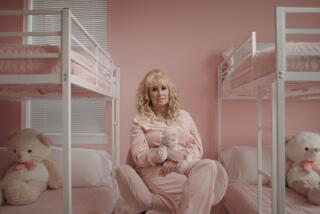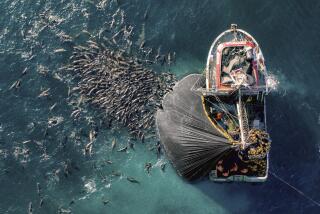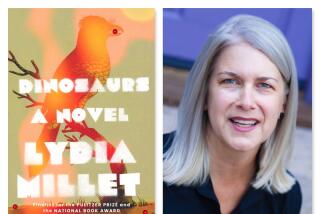Rhinos from a safe distance
Television is something of a double-edged sword when it comes to picturing the natural world (if we may imagine television as a sword). It brings that world closer, yet never closer than the other side of a screen, giving you the impression that you are safe (and separate) from nature, but also that nature is safe from you.
Nature isn’t safe from you, however. And on even the off-chance that TV might actually raise human consciousness as to the intrinsic and practical value of species other than its own, I am happy that the wild kingdom gets its airtime -- even as I admit that I personally tend to skip nature documentaries for fear that one animal might eat another to which I have become sentimentally attached. I accept the law of the jungle without wanting to watch it in action. (I feel the same way about “24.”) But something about “Rhinoceros,” which airs Sunday on the PBS series “Nature,” called my name; it seemed time to know more. And that they are themselves herbivores and have “few natural predators” seemed to bode well for a non-sanguinary hour. (And such is the case.)
It is the unnatural predator, of course, who is the problem. Poaching and the destruction of habitat have critically endangered the five remaining species of rhinoceros. (Although the White Rhinos of southern Africa have made a carefully managed comeback.) Of the Javan Rhinoceros, only 50 or 60 remain alive; that is to say, there are fewer of them than there are words in this paragraph. They are killed primarily for their horns, worth three times their weight in gold on the black market and used mainly for Asian traditional medicine, though they have no medicinal value.
The documentary itself is a diverting hodgepodge of rhino-related facts -- they have bad eyesight but excellent hearing, they can weigh 4 tons but move fast enough to be ticketed for speeding on a city street, birds congregate upon them to eat ticks and socialize -- and more or less breaking news, set to excellent location footage of all five species and including film of the successful birth of a Black Rhinoceros at the Cleveland Zoo. The narration (read by Daniel Stern, with the precise diction and lilt of a kindergarten teacher) is a trifle cute, but not fatally so; as much may be said for the “Lion King” exotica of the soundtrack. A character generated rendition of a prehistoric Woolly Rhino suggests what a prehistoric CGI Woolly Rhino would have looked like. (Like a rhino, but woolly.)
*
‘Nature: Rhinoceros’
Where: KCET
When: 8 to 9 p.m. Sunday
Ratings: TV-PG (may be unsuitable for young children)
More to Read
The complete guide to home viewing
Get Screen Gab for everything about the TV shows and streaming movies everyone’s talking about.
You may occasionally receive promotional content from the Los Angeles Times.







